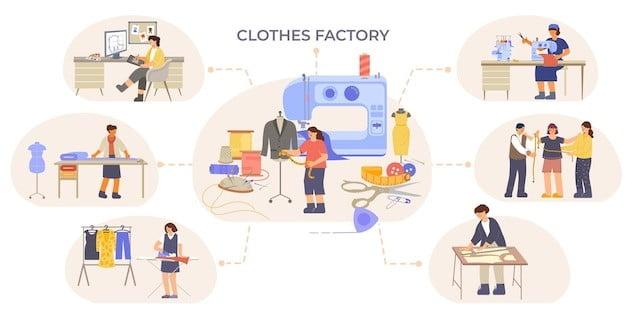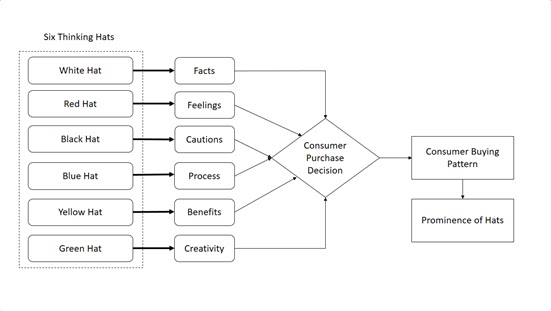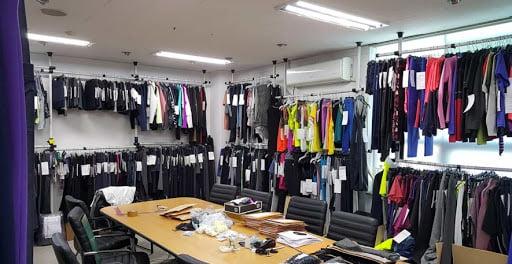Supplier selection criteria: Many industries have adopted the flexible production philosophy of mass customization as a reaction to the fast-changing customer demand environment. In relation to that mixed-model production (MMP) is a possibility for increasing flexibility, especially in the assembly department. However, many apparel companies have failed in their transition from traditional manufacturing to new, flexible manufacturing, which makes it difficult for them to be selected as suppliers who are capable of MMP.
In most of the studies that have been done before, the problem of supplier selection was based on productivity and cost as the main selection criteria. As an alternative solution this research presents a new group of criteria for supplier selection with respect to the goal of MMP. The methodology of combining the analytical hierarchy process (AHP) with the support of the commercial software package Expert Choice and cluster analysis (CA) is proposed in this study.
The results obtained present a new group of criteria, ranked by their importance, that the supplier needs to fulfil in order to be selected for MMP. Furthermore the large number of available suppliers was grouped into four clusters based on their similar characteristics by using CA. Finally the most acceptable cluster for MMP was selected using AHP. The methodology presented in this study can support the apparel industry in better decision making in the process of selecting the best group of suppliers for mixed-model production.
Introduction
In recent years, with rising production costs and stringent environmental regulations, an increasing number of manufacturers have shifted their production process to the Mainland China and other Asian countries such as Bangladesh, India, Vietnam, and Thailand. Manufacturers in those countries need to understand what their retailers and customers need in order to compete with their competitors from other countries. This implies that they need to know how the customers choose a supplier. By focusing on those criteria, manufacturers can continuously improve supply chain operations.
This is particularly important for the textile/ apparel industry. The typical problems that those apparel manufacturers encounter are long distance from customers in the US and European markets, long production lead time, and forecasting errors for seasonal items. The characteristic of fashion apparel is that they have short product life cycle therefore time to market is a very important dimension in that sector. Countries which are close to the US markets are less likely to be affected by competition from India and China. Mexico, the Caribbean, Eastern Europe, and North Africa are therefore likely to remain as important exporters to the US and can possibly maintain their market shares easily.
For the above reasons, manufacturers in the Asian countries have forced to improve the efficiency of their supply chains and to enhance competitiveness, for example, applying quick response (QR) philosophy. Being flexible and adaptive is a key to survival in future competition. The first objective of this study is to determine the variables or criteria in selecting the best supplier and to develop a supplier selection model based on these variables. This provides a simple but important evaluation method that can help retailers in selecting the right supply partners. The second objective is to discuss the management and implementation of QR in supply chain and explain how important the QR strategy in fast moving fashion market is.
The rest of this writing provides a brief review of the related studies, summarizes the research method and the proposed Analytical Hierarchy Process (AHP) model with MMP, which is applied later on.
Types of suppliers
- Nominated supplier
- Non-nominated supplier
Nominated supplier
- The nominated suppliers can supply the high-quality raw materials as prescribed by the buyer so that the buyer will not have any quality deviation between different manufacturing firms.
- The nominated supplier can avoid unnecessary delays in the order processing. Since they are developing raw materials or products for only this buyer, they know the importance very well.
Advantages of nominated supplier
- Time saving for garment manufacturer because they have to only deal with one supplier to get one or more material
- Quality assurance of the raw materials is ensured and taken care by buyer
- Nominated supplier can be involved in product development since they are already having good experience in the area.
Disadvantages for nominated suppliers
- The nominated suppliers may become overconfident about their product quality
- There may be a monopoly arising in the market
- Nomination may lead to unethical practices like corruption by agents and traders
- Loss of price competitiveness as supplier may sometimes overcharge.
Non-nominated supplier
Advantages of non-nominated supplier
- The non-nominated supplier works hard and tries his best to follow the instructions given by buyer or garment manufacturer due to highly competitive market
- Garment exporter may get the chance to explore with the innovative products offer by a non-nominated supplier
- The manufactures may also get some potential suppliers who can offer high quality product at low-cost, based on the raw material availability or technology available.
Disadvantages of non-nominated supplier
- There may be flaws in the quality of the raw material due to a communication gap between buyer and supplier
- To get involved with these suppliers in product development process is a difficult task
- It will be difficult for the buyer to control the areas like social compliance and ethical business practice norms followed by these suppliers
Selection process
- Defining criteria important for the selection of a supplier for multi-model production.
- Ranking the criteria according to importance.
- Evaluation of existing suppliers based on previously defined criteria, and
- The selection of the most appropriate group of suppliers for mixed-model production.
Figure 1. Research model for supplier selection for mixed-model
production.
Table 1. Supplier selection criteria ranking.
Selection | Team member | Criteria | |||||
1 | 2 | 3 | 4 | 5 | 6 | ||
Product | 0.349 | 0.246 | 0.277 | 0.084 | 0.227 | 0.308 | 0.248 |
Production | 0/213 | 0.090 | 0.277 | 0.121 | 0.153 | 0.087 | 0.156 |
Product | 0.126 | 0.090 | 0.097 | 0.178 | 0.023 | 0.049 | 0.093 |
Technical | 0.090 | 0.090 | 0.066 | 0.266 | 0.024 | 0.269 | 0.137 |
Production | 0.076 | 0.246 | 0.046 | 0.266 | 0.064 | 0.091 | 0.131 |
Management | 0.069 | 0.153 | 0.190 | 0.031 | 0.328 | 0.055 | 0.137 |
Logistics | 0.044 | 0.055 | 0.023 | 0.022 | 0.100 | 0.025 | 0.044 |
Financial | 0.034 | 0.028 | 0.023 | 0.031 | 0.064 | 0.117 | 0.049 |
Selection criteria
- Financial position (FP) refers to the willingness and ability of the supplier to produce the order for the price agreed with the customer.
- Logistic position (LP) refers to the supplier’s ability to optimize the timing, transportation and storage costs of the goods.
- Management system (MS) is a system for interrelated departments to ensure not only satisfaction of legal conditions related to environmental, health and safety issues but also the provision of production planning, training, research and development.
- Technical capability (TC) is the ability of the supplier, by using their capacity, to fulfil production requirements according to the accepted standards and customer needs.
- Production capacity (PC) includes all the supplier’s necessary equipment, facilities, infrastructure, human resources and knowledge for the production of customer orders.
- Production flexibility (PF) is the ability of the supplier to respond swiftly to changes related to alterations of the product type.
- Product quality level (QL) refers to the implementation of the quality management system (QMS) with all necessary quality check stations to ensure efficient quality tracking and quality assurance (QA).
- The supplier produces a number of different types of products over the study period, known as the product range (PR).
Conclusion
Reference
Check out these related articles:









1 thought on “Supplier Selection Criteria for A Garment Order”